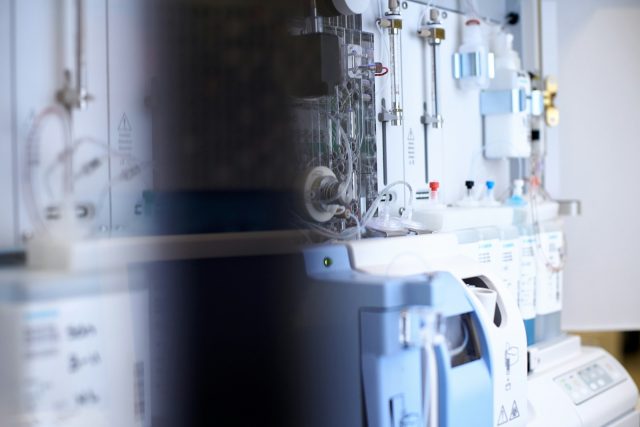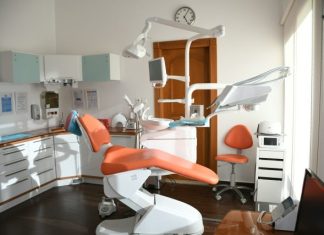
Laboratories across industries rely on accurate testing methods to deliver reliable results. Ion chromatography provides scientists with tools to detect and measure specific chemical compounds in samples. This analytical technique separates ions based on their electrical charges, allowing technicians to identify and quantify substances with exceptional accuracy.
The Basic Principles of Ion Analysis
Ion chromatography works through a separation process that identifies charged particles in solution. The system pushes samples through specialized columns filled with resin materials. These resins interact with ions differently depending on their charge and size. Smaller ions typically move through the column faster than larger ones, creating distinct separation patterns.
The equipment records when each ion exits the column, producing a chromatogram that shows specific peaks. Each peak corresponds to a particular ion in the sample. Analysts compare these peaks against known standards to determine exactly which compounds exist in the material and in what amounts.
Scientists apply this technique to analyze anions like chloride, fluoride, and sulfate, as well as cations such as sodium, potassium, and calcium. Laboratories use ion chromatography to test water quality, pharmaceutical ingredients, food components, and industrial chemicals with precision down to parts per billion.
Essential Equipment Components
The ion chromatography system consists of several interconnected parts that work together to deliver accurate results. The pump pushes liquid through the system at precise, controlled rates.
The injection system introduces an exact amount of sample into the flowing stream with proper flow measurement. Most modern systems include auto samplers that handle multiple specimens without manual intervention, reducing human error and increasing efficiency.
The separation column contains specialized resin that separates different ions as they pass through. Guard columns protect the main analytical column from contamination and extend its useful life. The detector identifies and measures ions as they exit the column, with conductivity detectors serving as the most common type for standard applications.
Computer systems control the equipment and process the data, converting detector signals into readable reports. These systems allow technicians to automate testing procedures and analyze results with specialized software that identifies peaks and calculates concentrations.
Applications in Environmental Testing
Environmental laboratories use ion chromatography to monitor water quality and detect pollutants. The technique measures substances like nitrates and phosphates that contribute to water pollution and algal blooms. Testing facilities analyze samples from lakes, rivers, drinking water supplies, and wastewater treatment plants to ensure compliance with safety regulations.
The method detects harmful contaminants at very low concentrations, allowing early identification of potential problems. Environmental agencies monitor acid rain components by measuring sulfate and nitrate levels in precipitation samples. Soil testing laboratories use the technique to evaluate nutrient content and detect contamination from industrial activities.
Scientists studying climate change track ion concentrations in ice cores and glacial samples. These measurements provide information about atmospheric conditions from thousands of years ago, helping researchers understand historical climate patterns. The precision of ion chromatography makes these detailed environmental assessments possible.
Pharmaceutical Quality Assurance
Pharmaceutical companies depend on ion chromatography to ensure medication safety and efficacy. The technique verifies the identity and purity of active ingredients, confirming that products contain exactly what their labels claim. Quality control laboratories use this method to detect impurities that might affect drug performance or patient safety.
The analysis measures counter-ions in salt-form drugs, which impact solubility and stability. Manufacturers monitor production processes by testing intermediate products at various stages, allowing them to identify and correct problems quickly. This analytical method also supports stability testing by tracking how formulations change during storage under different conditions.
Regulatory agencies require pharmaceutical companies to validate their analytical methods, including ion chromatography procedures. Laboratories must demonstrate that their testing protocols produce consistent, accurate results. This validation process includes precision studies, linearity testing, and robustness evaluations that confirm the reliability of analytical data.
Food and Beverage Analysis
Food testing laboratories use ion chromatography to analyze nutrients and additives in consumer products. The technique measures sodium, potassium, and calcium content in foods, helping manufacturers create accurate nutrition labels. Quality control teams check preservative levels to ensure they remain within regulatory limits while still providing effective product protection.
Beverage producers analyze organic acids that affect flavor profiles and stability. Wine and juice manufacturers monitor acids like tartaric, malic, and citric to control taste and quality. Bottled water companies verify mineral content matches label claims through precise ion analysis.
The method detects artificial sweeteners and flavor enhancers in processed foods. It also identifies illegal additives or adulterants that might pose health risks. Food safety agencies use ion chromatography to investigate contamination incidents and verify product authenticity, protecting consumers from fraudulent or dangerous items.
Industrial Process Control
Manufacturing facilities use ion chromatography to maintain quality standards in production processes. The technique monitors chemical concentrations in industrial solutions, helping technicians adjust formulations as needed. Power plants analyze cooling water and steam generator chemistry to prevent corrosion and scaling that could damage expensive equipment.
The semiconductor industry relies on ion analysis to control ultrapure water systems. Even trace ionic contamination can ruin sensitive electronic components, making precise testing essential. Manufacturers check cleaning solutions and process chemicals to ensure they meet strict purity requirements.
Chemical producers use the method to verify product specifications and detect impurities. The analysis supports process optimization by providing data about reaction efficiency and yield. Quality control programs include regular testing of raw materials, intermediates, and finished products to maintain consistent quality throughout the manufacturing cycle.










